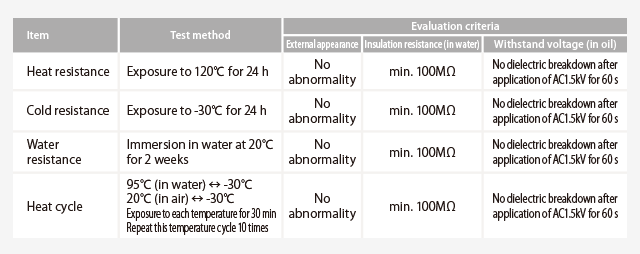The products shown in this catalog have not been developed or commercialized for use in medical or other special fields which are associated (directly) with human life and the body. If you intend to use these products in a special field related to human life or the body, be sure to carry out preliminary safety testing of the particular products by yourself and use them at your own responsibility.
The product data in this website represent typical values measured from a single product. Features of the products also represent their general physical properties. These data do not guarantee the safety of the products in individual applications. Therefore, you are required to unconditionally check by yourself that the particular products conform to the safety requirements of your particular applications. Please understand that Sumitomo Electric and its affiliates do not assume any responsibility for any accidental or indirect loss.
Since the sealing properties of SUMITUBE and IRRAXTUBE with adhesive lining differ depending on their use conditions, first check their sealing properties under your particular use conditions.
As for the product appearance, a small wound and irregularity, a dirt, the unevenness of the hue may be seen. These are not malfunctions in being used for main use such as insulation protection, mechanical protection or bundling. Please contact us in case you require special appearance quality.
Depending on the storage condition, some compounding agents may precipitate on the surface of the tubes.
Comply with the use conditions specified in each safety standard.
Special care is required when shrinking a tube over an object containing a sharp bend, corner, protrusion, or edge. The tube may split.
Please note that the contents of this website are subject to change without prior notice.

 The table below shows the characteristics of two (PVC) lead wires, A and B, with their joint shielded with SUMITUBE W3C or SUMITUBE O2C. SUMITUBE W3F2 and SUMITUBE O2B2 have the same waterproof as the above two tubes.
The table below shows the characteristics of two (PVC) lead wires, A and B, with their joint shielded with SUMITUBE W3C or SUMITUBE O2C. SUMITUBE W3F2 and SUMITUBE O2B2 have the same waterproof as the above two tubes.






